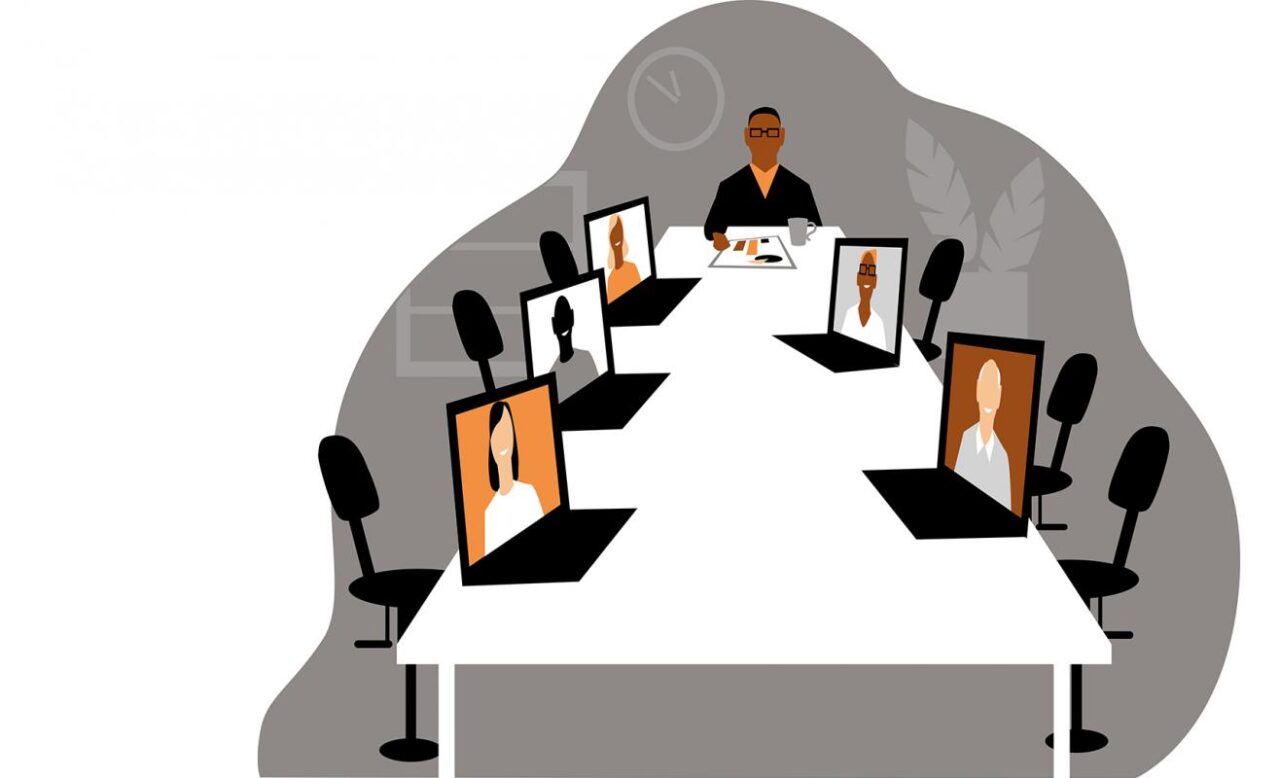
In the living memories of many, there have been a number of disruptions in the world of work.
No job for life
In the mid-1980s, Baby-Boomers suddenly learned that they didn’t have a job for life, which was the biggest upheaval in the workplace for more than 100 hundred years.
Everyone learns to type
Another disruption also began around that time. It used to be that the vast majority of people couldn’t type. Organizations had secretaries, and the biggest ones had typing pools. Most men couldn’t type at all, and the ones who could used the time-honored “hunt and peck” method.
Desktop computers arrived in the 1980s and introduced the idea of touch-typing, but even then it took some time before typing of any kind became a skill that the great majority of people had acquired. Part of the reason for that was that mass-produced cell phones weren’t available until 1992. In that year, the first text message was also sent, but wasn’t widely used to communicate until 2002. (Texting is nothing more than typing on a very small keyboard, which remarkably many do with just their thumbs – easily the widest, and you’d think, the clumsiest of your fingers.)
Hybrid work environment
The pandemic years of 2020-2021 disrupted the world of work again, but this time all the elements were in place to produce what is the now expected hybrid work environment. Instead of spending all of their time at their place of employment, employees vary the places where they work. WFH – or work from home – actually covers a wide range of locations. It could mean that you’re at home, but it could also mean that you’re in a coffee shop, your garden shed, or on the patio of a hotel in a sunnier place than where you live.
And it’s that new arrangement – working here, there, and everywhere – that has created its own set of managerial challenges, especially in the area of employee performance.
One thing that you must remember, however, is that this is a golden opportunity to completely rethink your entire performance management process. The end result should not be one that as closely as possible matches the old one, except that it allows for hybrid working. Instead, it needs to be a grassroots reinvention. And anything less than that is to deny the existence of a hybrid work environment.
Out of sight, out of mind
One challenge that managers have is that they think that if they can’t see their employees working, then that must mean that they’re not.
The truth is that while employees may work fewer hours, they’re still getting their work done. And that’s due in part to the fact the same amount of work they were given in the office can be done in less time because there aren’t all the interruptions that they had to put up with before. For instance, the only phone that’s likely to ring is theirs, which they can mute it if they wish, rather than 50 others in an open office. They can focus on their work – what they have to do – without having to half-hear all the other conversations that are going on around them.
This is where trust comes in. Managers have to learn to trust their people. It’s harder to micromanage from across town than it is in person. That doesn’t mean that you give up managing. Instead, it means that you learn to manage effectively – something you should have been doing all along.
One way to do that is by creating incremental milestones. In your daily (twice weekly would be better) meetings – (and unless it’s an emergency, you shouldn’t need to do it more often than that) – with you, that’s when you can get an update on their progress and answer any questions. As they reach these milestones, your confidence will grow in their ability to work effectively without your supervision.
And when you can trust them to do so when they’re out of the office, then it also means that you can leave them alone to do their work when they’re in it. Don’t allow yourself to fall into the trap of managing more when people are in the office than you do when they’re not.
One-size fits all
Wouldn’t it be great if you could find a one-size-fits-all way to conduct performance reviews? Hate to break it to you, but it doesn’t exist. In fact, it’s more fragmented now than ever. It’s likely that you’ll have to create what amounts to a tailored version for nearly everyone, and that’s because hybrid working has introduced so many more variables.
You can no longer assume, for instance, that everyone works in the same kind of environment. And that’s because away from the office, the surroundings are unique.
Yes. Unique.
No two are alike.
Everyone’s home is different, and everyone in that home is different. Different personalities, ages, activities – you name it. In other words, the work environment is no longer an even playing field. It’s as if everyone is playing in a field of their own.
How can you fairly appraise performance in these circumstances?
It ain’t temporary
For one thing, you have to get past the idea that this is a temporary phenomenon because quite clearly it isn’t. That means that you have change how you do it. And it won’t ever go back to the way it was. That’s not only because so many people like the new way of working, but also because everyone knows that it doesn’t have to be any other way. They can have their cake, so to speak, and eat it, too.
Commonalities
Part of your review process should be to consider what people have in common. Admittedly, away from the traditional workplace, there’s very little, but when they work at their pre-pandemic, pre-hybrid place of employment, then they still share much of what they had then; and that means that you can evaluate their performance using the same or similar metrics for that location as you did when everyone was together.
One commonality that’s often overlooked is the amount of time that people spend face-to-face with senior people. If you’re not in the place of employment, then you can’t even say “Hi” serendipitously with those who are. However, in a work environment where there are fewer people around, your ability to stick your head in the door of someone that you seldom see otherwise affords you the opportunity to build a relationship that you might not have had. This can create a form a unconscious bias – the tendency to lean towards something or someone that you’re not aware of. This is where “who you know” can give you an advantage over others.
Building relationships has always been the best approach to doing anything at work, but as a manager, you must be careful not to allow relationships that you have with others to bias your objectivity as a result. That means that you have to make sure that you have your right “hat” on when you make such evaluations. It’s also worth mentioning that those who miss out on these opportunities need to understand that that’s part of life. Managerial fairness doesn’t exclude the likelihood that some will develop relationships, while others won’t.
Agreed-upon expectations
At the risk of sounding like MBO (management by objectives), both managers and employees need to articulate not only what work needs to be done, but also by what date it will be completed. To the extent possible, however, managers need to focus on the outcome and leave the process to those who do the work. That’s not only because workers value autonomy and can get more done when they’re not micro-managed, but also because in a remote setting managers have no choice.
Self-evaluations
One way to get a feel for how employees are performing is through self-evaluations. This method has been around for decades, and they probably aren’t as effective as managers would like to think. But they can be a good yardstick for people to help them to know where they are at any given time. They can see what they’ve accomplished, and what they have yet to do. Such comparisons can also help you to manage people better, whether they’re in the office or not.
Don’t confuse development with performance reviews
One of the dangers that comes with trying to manage performance in a hybrid work environment is the desire to cut corners; to lump together activities.
One popular combination is development and performance reviews. Actually, this is something that managers started to do at least 25 years ago. It was a bad idea then and, despite the pressures, it still isn’t something you should do.
Personal and professional development are both needed in order for people to successfully navigate their careers, and you should support both, but never – never – attempt to mix a review of past performance with future development. And that’s because they have opposite goals.
Development is about identifying those areas where improvement is needed. Performance reviews are about looking as good as you can in front of your supervisor. Employees will be loathe to admit that they need development if there’s the least chance that it will affect their rating.
Autonomy
The single biggest thing you need to remember when it comes to managing performance in a hybrid work environment is that employees need and want more autonomy to do their work.
When everyone was in the same room or the same wing, it was different. They still needed to be able to work uninterrupted by you or anyone else, but it was easier for you to communicate with people. Management-by-walking-around was something that could be practiced. To do that nowadays would look more like management-by-using-Uber, an impractical solution. Use this new situation as a way to gallop.
Face-to-face doesn’t mean Zoom
Any performance reviews need to be done face-to-face, and that doesn’t mean on Zoom. It means in a room – together.
The same thing is true to a lesser extent in managing performance. That people are spread out just means that it may take a bit longer. For instance, you could have people come to your office for periodic reviews.
The thing to remember is that teleconferencing isn’t the greatest communication tool ever invented. Personal conversations beat that method long before electricity was discovered. What Zoom and similar platforms have done it make it possible to meet where personal meetings aren’t possible. But that doesn’t mean that it should become the default method.
Teams
Before we close out this discussion, we need to think briefly about teams.
There’s something of a presumption that managing team performance in a hybrid work environment post-pandemic is harder than it was pre-pandemic. That’s partly true, but probably not to the extent that you think it is.
For instance, you knew beforehand how people preferred to work, or even where they wanted to have their meetings. Maybe they wanted to use a company conference room or sit in the “campus” grounds, if your organization was fortunate enough to have that facility.
Post-pandemic may simply mean that they prefer to meet elsewhere – entirely away from the workplace; and yes, even via Zoom. Although teleconferencing can be used if domestic circumstances are such that it’s the only practical way to do it, it still should be remembered that before the pandemic, teams figured out how to do it in person. And that’s still the most effective way. That means that although teleconferencing is possible, it shouldn’t be used to replace face-to-faced meetings when such meetings are possible. It’s essential that teams meet together.
Another way to promote team camaraderie is to encourage them to engage in offline extracurricular activities. Of course, this will depend on its members. The best teams play together as well as work together, and so that may mean that you need to allow them to change members so that they can be with people who are like them.
The post-pandemic world of work offers an amazing opportunity to redesign your managerial systems. Rather than trying to preserve as much of the old as possible, use this rare disruption to start over. Get rid of the traditional attitudes towards management that have held you back and embrace employee autonomy and responsibility.
It will make your job a lot easier.











